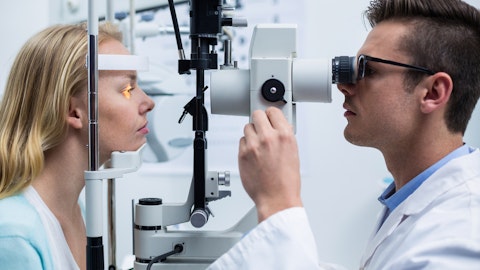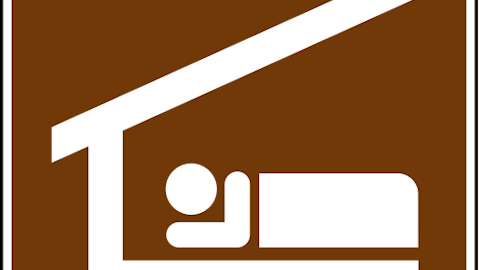Tim Herbert: Yes. Let’s go back and talk a little bit about what we’re talking about first. First, I think, we’ve always kind of talked about like a 12%, seasonality as we moved into Q1. But when we’re talking about with these stimulation leads, we — remember, we’re in the third quarter when we transitioned from the polyurethane production line to the silicone production line. We built up safety stock polyurethane, then we had to stop and purge the line and get them back up and running. And we did that, but we have to be able to get up to volume. And then the process of scaling is when we ran to some of the challenges. So, we went to more of a just in time delivery to support cases and would be holding some powers, part level of orders or things like that.
But we were able to fulfill, and closely track with schedule procedures to make sure that we had all those products ready to go. And for cases that get scheduled in January and part of the just in time system, some of those may ship in January. So, probably not a big number, but certainly wanted to bring awareness to that in that the seasonality still exists, but with the supply chain challenges, it might offset that a little bit, but the just to make everybody aware of that. But the good news is the inventories are growing and the production lines are scaling up.
Rich Newitter: Okay, that’s helpful, got it. So, it sounds pretty minor. Your normal seasonality is probably a good way to think about it. And then just on the account opportunity, I think, I think you’re right under a 1,000 centers right now in planting centers. You’ve talked in the past about, I know it’s very high level, but I think something to the tune order magnitude of 4,000 accounts in the U.S. that you could theoretically get. And I think you’ve also said there’s 4,000 ASCs out there. Can you maybe just refresh our memory on kind of how you see that a 1,000 installed base progressing towards some account opportunity and what is the right account opportunity?
Tim Herbert: Yes, good question. So yes, when we took that 4,000 and 4,000 got to a total of 8,000 and then we just assumed about a third of those centers would have a capability or would be doing Inspire and that put our target market at 2,400. And I think over the last couple quarters, we’ve been spending more time evaluating that, because we’ve been recognizing in smaller communities, physicians are setting up centers that don’t require patients to take long drives into more of the larger city centers. So, I think we’re going to continue to evaluate that. I think the number of centers that we can move to will far exceed the 2,400. And we’ve already demonstrated in some towns in Idaho, Montana, even in that well, Jackson, Wyoming, that there are very productive accounts in these smaller communities, and we can really leverage the community doctors to be able to offer Inspire and have more community-based care.
So I think that story continues to evolve, and we will continue to increase the number of centers capable of treating patients with Inspire.
Operator: Thank you. Our next question comes from Larry Biegelsen with Wells Fargo. You may proceed.
Larry Biegelsen: I wanted to ask on the guidance and the new indications and label changes. Tim, what do you assuming for the timing down to AHI, BMI and any impact that you’re assuming in the guidance?
Tim Herbert: I think we’re very optimistic with the pediatric population with Down syndrome. I think that we’ve been working closely with the FDA to answer questions that they have, they’ve come and done audit on the clinical data. So, we know that they’re progressing under review as well. And so we’re optimistic that that should happen in the first half of the year, which I think is really exciting. As far as the high AHI and the warrants for BMI, I think that also is progressing, we’re working with the FDA again, and a little bit earlier stage, so that will take a little bit longer to be able to get that approval, but certainly confident that that’s coming through. And it does have the proper designation to help accelerate the review at the FDA.
So, we expect both of those in the near future and should have impact on the business. So we did try to kind of build that into the guide that we put forward. I think the, in both of those populations, it’ll be a little bit of a slow uptick as we get awareness out there and to be able to incorporate that into the existing practices. The good news is a lot of the pediatric hospitals or the children’s hospitals are affiliated with some of the larger institutions that already do inspire today. So we already have an Inspire present. So hopefully, that will streamline our ability to get those centers up and running on the pediatric front. So more to come on that we’re very excited about that population that’s near and dear to our heart, and will work in with the societies and in the parents of family groups to be able to build awareness of that.
Larry Biegelsen: Just one follow-up on pediatric Down. Why do you think the uptake will be low there? They’re relatively well or well organized community, if you will. I think the clinical need seems pretty, pretty high here. You’ve been working on this for a while. So why do you expect the uptake in that population to be slow? Thanks for taking the questions.
Tim Herbert: I think we will be working on it for years, and you’ve seen the clinical studies and enrollment those studies and it’s still a relatively small number of patients have we seen Inspire in that pediatric group. I think it’s a new therapy, and a new option for the families and the doctors to be able to understand. So, I think this is going to be an educational process like any new indication or like any new therapy or in introducing Inspire into any new country. There’s just always just a little bit of a slow adoption curve as people learn about to therapy and become comfortable with it and increase the prescription of the therapy.
Operator: Thank you. Our next question comes from John Block with Stifel. You may proceed.
John Block: Maybe first with review, in the quarter, I’m talking around 15 million I just don’t have the cash flow statement, so maybe just your thoughts on around 15 million? And if so, I believe you guys would be EBITDA positive for full year ’22. Maybe just provide your thoughts on how that would look or trend for full year ’23?
Rick Buchholz: Yes. So, stock-based compensation was about 15 million. So in rough terms, John, we’re about 18 million roughly in EBITDA positive for the fourth quarter. And so that stock based compensation expense has increased. Again, that will increase. We’re also going to continue to make investments along our all facets of our business R&D, sales and marketing, and so on. And so with that, we expect that, we’ll lose leverage in the first quarter with our seasonality but then gain that back as we progress throughout the year. But again, we’re not providing any guidance on OpEx or bottom-line at this time.
John Block: No, I got it. But I guess maybe just as a follow-up to that. If you’re EBITDA positive or full year ’22, which you just confirmed, and you expect leverage, not for 1Q, but over the course of ’23. We can just sort of draw our own conclusions from there. Is that a fair statement?
Rick Buchholz: That’s fair.
John Block: And then, Tim, just you talk to us, if you don’t want on the ASCs a little bit. I think it came in again 23%, is that representative as a percent of the overall procedures? And maybe more importantly, how do you see this playing out and evolving over time. I think initially, you were excited about those potentially being higher utilization settings, the reimbursements improved there, you’ve got a good number or percentage commercial payers, to talk to us and how that can help act as an overall driver for utilization for Inspire longer term?
Tim Herbert: I think it was continue to be excited about. And I think this maybe a little bit more of post-COVID phenomena where the hospitals are really active again. And so while we’re still at 23%, we’re still growing the number of ASCs. But we’re growing the number hospitals as well and that’s not too surprising. I do think the utilization impact that we’re seeing is part of a factor of the ASCs is I think, right now we’re running maybe 20% of our procedures are done in as ASC. Even though ASC make up 23% of the centers, what that means is they’re taking more of their fair share of the procedure. So, that’s really good to see the utilization growing in both, but particularly in ASCs. As we continue to progress, I think we’ll continue to look for further sites of service.
But as we know, the reimbursement in hospitals continues to be very, very strong, and our ability to garner all our time to take care of the patient continues to grow. And that is evidenced by the increased utilization across the board. So we’re not taking our focus off as his but we continue to leverage all the hospitals that want to participate with Inspire as well.
Operator: Thank you. Our next question comes from Michael Polark with Wolfe Research. You may proceed.





